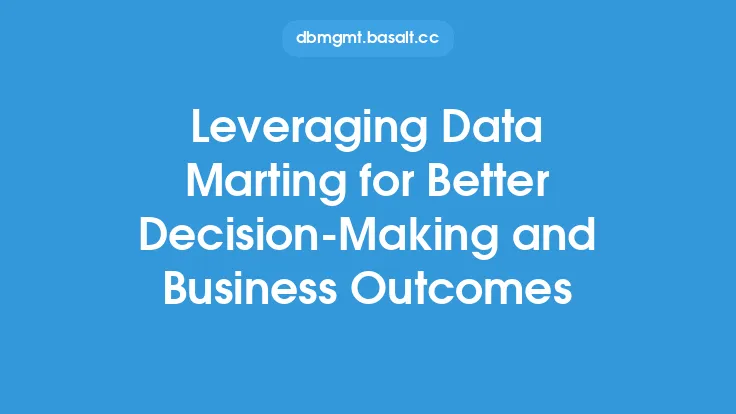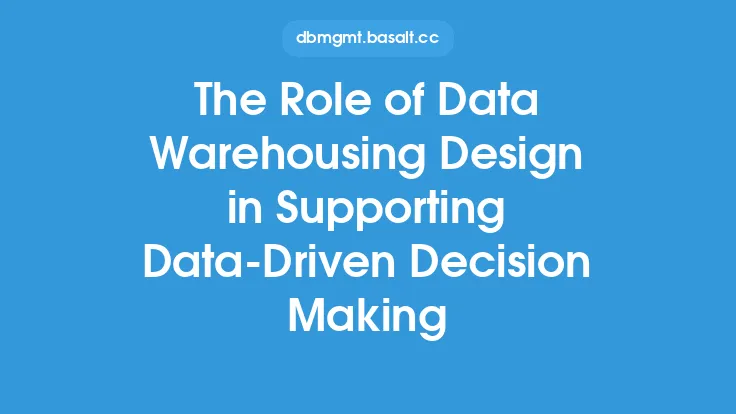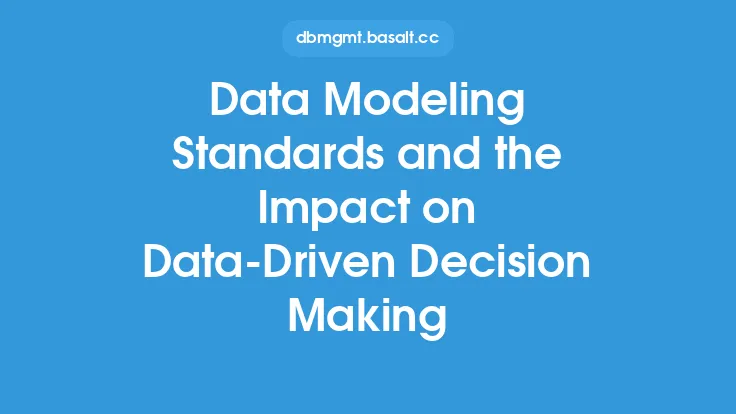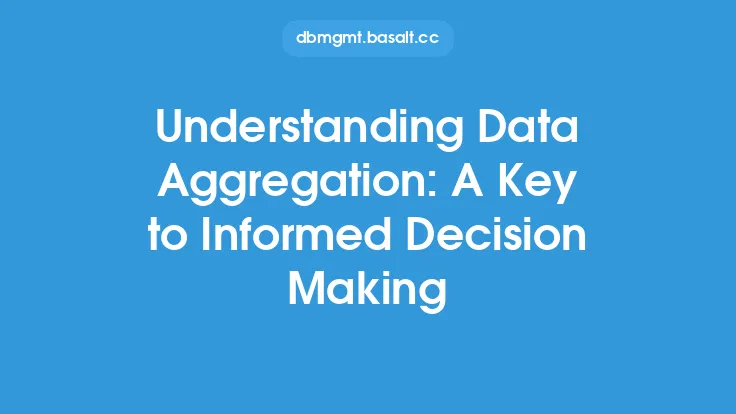In today's data-driven world, organizations are constantly seeking ways to improve their decision-making processes. One crucial step in achieving this goal is to ensure that the data being used is accurate, reliable, and granular. Data disaggregation plays a vital role in this process, as it enables organizations to break down complex data sets into smaller, more manageable components. By doing so, organizations can gain a deeper understanding of their data, identify trends and patterns that may have gone unnoticed, and make more informed decisions.
Introduction to Data Disaggregation
Data disaggregation is the process of breaking down aggregated data into its constituent parts. This involves separating data that has been combined or grouped into categories, such as demographics, sales regions, or product lines. By disaggregating data, organizations can reveal hidden insights, identify areas of improvement, and develop more targeted strategies. For instance, a company may have aggregated data on sales by region, but by disaggregating this data, they may discover that certain products are performing better in specific regions, allowing them to adjust their marketing and sales strategies accordingly.
Benefits of Data Disaggregation
The benefits of data disaggregation are numerous. Firstly, it enables organizations to identify trends and patterns that may have been obscured by aggregated data. By breaking down data into smaller components, organizations can gain a more nuanced understanding of their business, customers, and market. Secondly, data disaggregation allows organizations to develop more targeted strategies, as they can tailor their approaches to specific segments or groups. This can lead to improved customer engagement, increased sales, and enhanced competitiveness. Finally, data disaggregation can help organizations to identify areas of inefficiency or waste, allowing them to optimize their operations and improve their bottom line.
Technical Aspects of Data Disaggregation
From a technical perspective, data disaggregation involves a range of techniques and tools. One common approach is to use data warehousing and business intelligence software, which can help organizations to extract, transform, and load (ETL) data from various sources. This data can then be analyzed and visualized using a range of tools, such as dashboards, reports, and data visualization software. Another approach is to use statistical modeling and machine learning algorithms, which can help organizations to identify patterns and trends in their data. For example, clustering algorithms can be used to group similar customers or products together, while regression analysis can be used to identify relationships between different variables.
Data Disaggregation in Real-World Scenarios
Data disaggregation has a wide range of applications in real-world scenarios. For instance, in healthcare, data disaggregation can be used to analyze patient outcomes, identify areas of improvement, and develop more targeted treatment strategies. In finance, data disaggregation can be used to analyze transactional data, identify trends and patterns, and develop more effective risk management strategies. In marketing, data disaggregation can be used to analyze customer behavior, identify segments and groups, and develop more targeted marketing campaigns. By breaking down complex data sets into smaller components, organizations can gain a deeper understanding of their business and make more informed decisions.
Challenges and Limitations of Data Disaggregation
While data disaggregation offers many benefits, it also presents several challenges and limitations. One of the main challenges is data quality, as disaggregated data can be noisy, incomplete, or inconsistent. Additionally, data disaggregation can be a time-consuming and resource-intensive process, requiring significant expertise and investment in technology and infrastructure. Furthermore, data disaggregation can also raise concerns around data privacy and security, as sensitive information may be revealed or compromised during the disaggregation process. To overcome these challenges, organizations must ensure that they have robust data governance policies and procedures in place, as well as the necessary expertise and resources to support data disaggregation.
Best Practices for Implementing Data Disaggregation
To implement data disaggregation effectively, organizations should follow several best practices. Firstly, they should ensure that they have a clear understanding of their business goals and objectives, as well as the data they need to achieve these goals. Secondly, they should invest in robust data governance policies and procedures, including data quality, security, and privacy protocols. Thirdly, they should develop a comprehensive data strategy, including data warehousing, business intelligence, and analytics capabilities. Finally, they should ensure that they have the necessary expertise and resources to support data disaggregation, including skilled data analysts, statisticians, and data scientists. By following these best practices, organizations can unlock the full potential of data disaggregation and improve their decision-making processes.
Future Directions for Data Disaggregation
As data continues to play an increasingly important role in business decision-making, the importance of data disaggregation will only continue to grow. In the future, we can expect to see significant advances in data disaggregation techniques and tools, including the use of artificial intelligence, machine learning, and cloud computing. Additionally, there will be a growing need for organizations to develop robust data governance policies and procedures, as well as the necessary expertise and resources to support data disaggregation. As organizations continue to navigate the complexities of data-driven decision-making, data disaggregation will remain a critical component of their data strategies, enabling them to unlock hidden insights, identify trends and patterns, and make more informed decisions.





